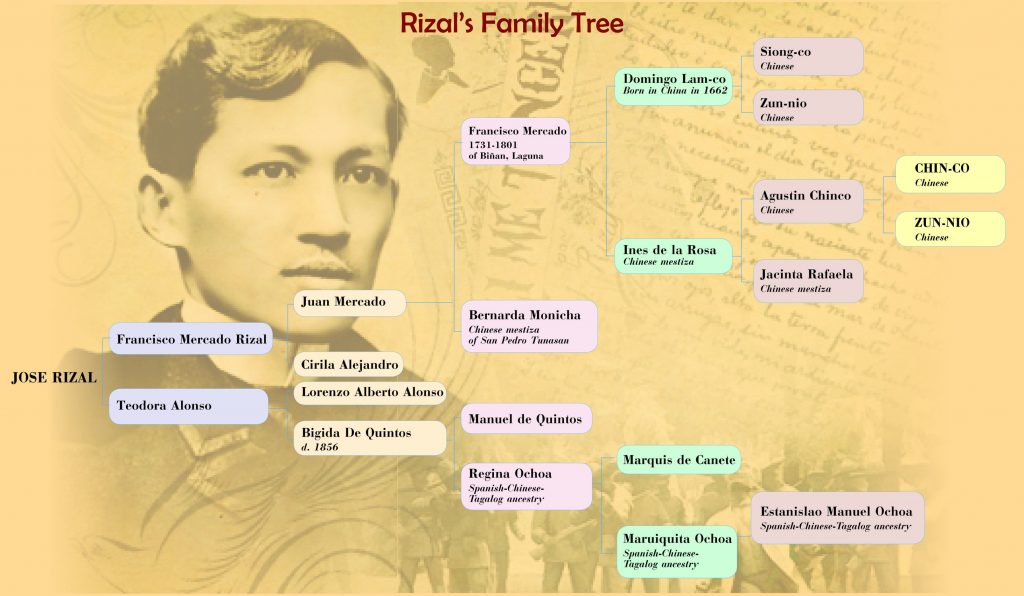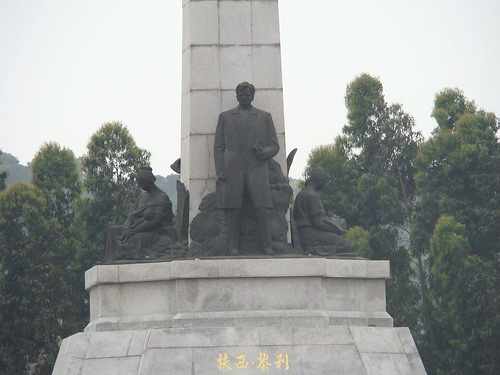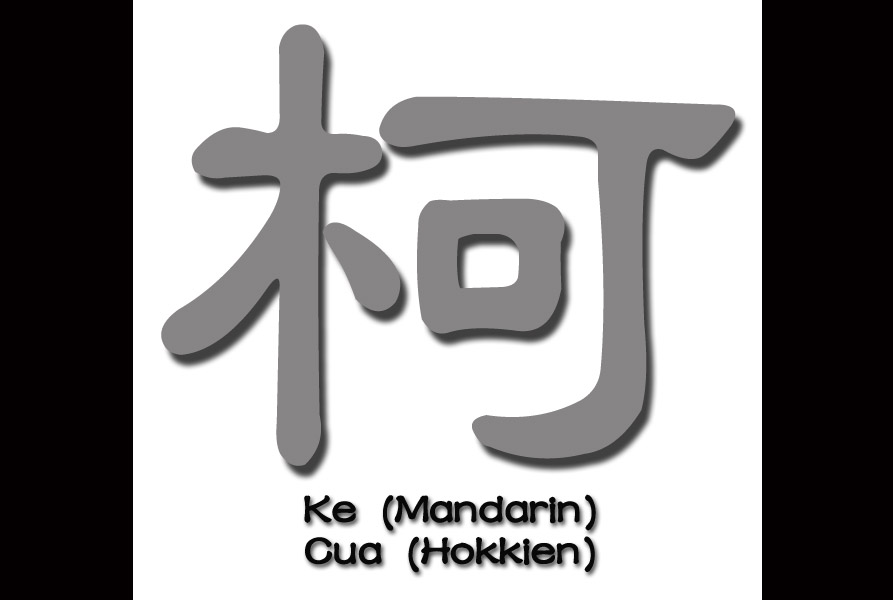First published in Tulay, Fortnightly Chinese-Filipino Digest 24, no. 7 (September 6-19, 2011): 5-6.
Although it ranks only 28th among Chinese surnames in the Philippines, the surname 柯 (Ke in Mandarin, Cua in Hokkien) is of special significance in the Philippines because it is the Chinese surname of Domingo Lamco, the great-great-grandfather of our national hero, Jose Rizal.
The Cua ancestor is Ke Lu (柯盧, Cua Lo in Hokkien), said to be the seventh-generation grandson of Zhou Wen Wang (周文王). Zhou Wen Wang is the king of the State Zhou (周) and the father of the first emperor Zhou Wu Wang (周武王) who established Zhou Dynasty (1066-256 BC) in China.
The Chua ancestor, Cai Su Du (蔡叔度) in Mandarin, is the younger brother of Zhou Wu Wang.
So in fact, both surnames originated from 姬 (Ji) of Zhou State, although from different branches. This makes both lineages heirs to the Zhou imperial court. In the Philippines, this brings them together in a common family association, (菲律濱濟陽柯蔡宗親總會 Che Yong Cua Chua Association).
There is still another interesting story about the common origin of the Chuas and Cuas that led to a common family association.
It is said that during the Song (宋) Dynasty (960-1279), a certain Chua Chap Long (蔡十郎) moved to An Ping (安平) and married a daughter of the Cua family and stayed with them in a custom that was called “入贅” (ru zhui in Mandarin, for a man to marry with a woman and stay with the latter’s family).
Chua Chap Long let his eldest and fifth sons bear the surname Cua instead of Chua to ensure that the Cua family lineage continues. With that, the two families became one.

In Siongque, Rizal’s ancestral hometown in China, all but one family bear the surname Cua. Siongque is a village of 4,500 with more than 2,000 living overseas, mostly in the Philippines.
The Chinese name of Lamco, Rizal’s ancestor, is 柯儀南 (Cua Yi Lam in Hokkien). He is a pure-blooded Chinese from Siongque (上郭) Village of Luoshan (羅山) county in Jinjiang (晋江), Fujian province.
A fearless entrepreneur, he not only ensured the economic survival of his descendants but also secured their socio-political leadership as highly-educated ilustrados. Lamco achieved business success despite cruel odds and harsh conditions. The Spaniards persecuted the Chinese and Chinese mestizos, forced pay unfairly higher taxes on them, and even massacred them on several occasions.
Persecutions toughened the Chinese traders, making them resilient and resourceful. Lamco, at 35, was baptized in the Catholic church of Manila’s Parian Chinese ghetto in June 1697. He later moved to Biñan, Laguna, prospered and became a Chinese community leader.
To free his heirs from the Spanish regime’s anti-Chinese racist policies, Lamco gave his clan the new surname ‘’Mercado’’ (meaning ‘’market’’ in Spanish) so that his heirs will not forget their Chinese merchant roots.
The nation celebrated Rizal’s 150th birth anniversary last June 19 [2011].

In 2000, a monument to Rizal was erected in Siongque and inaugurated in 2002. And recently, a group of the Chua townmates in Siongque initiated the restoration of the ancestral house of Domingo Lamco or Cua Yi Lam.
The Chinese community in the Philippines also contributed to both the monument in Siongque and restoration of the Lamco ancestral house.





